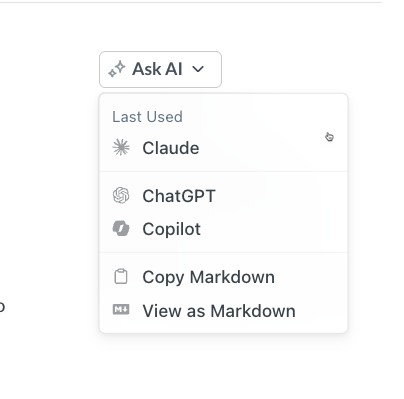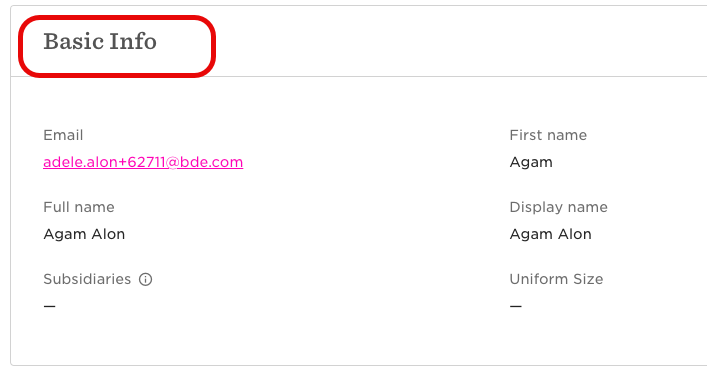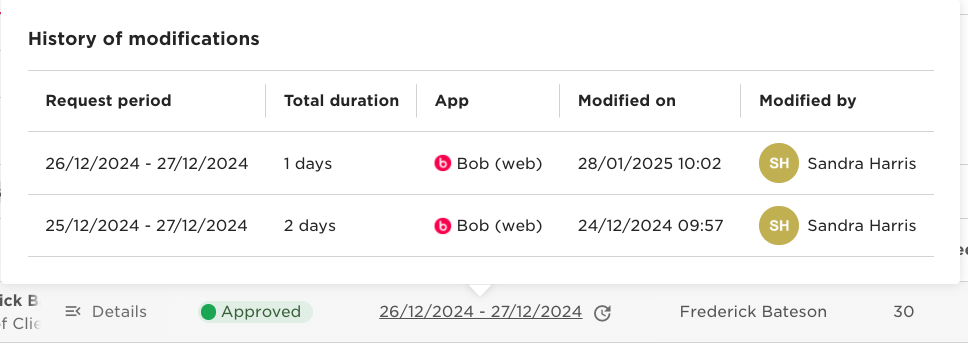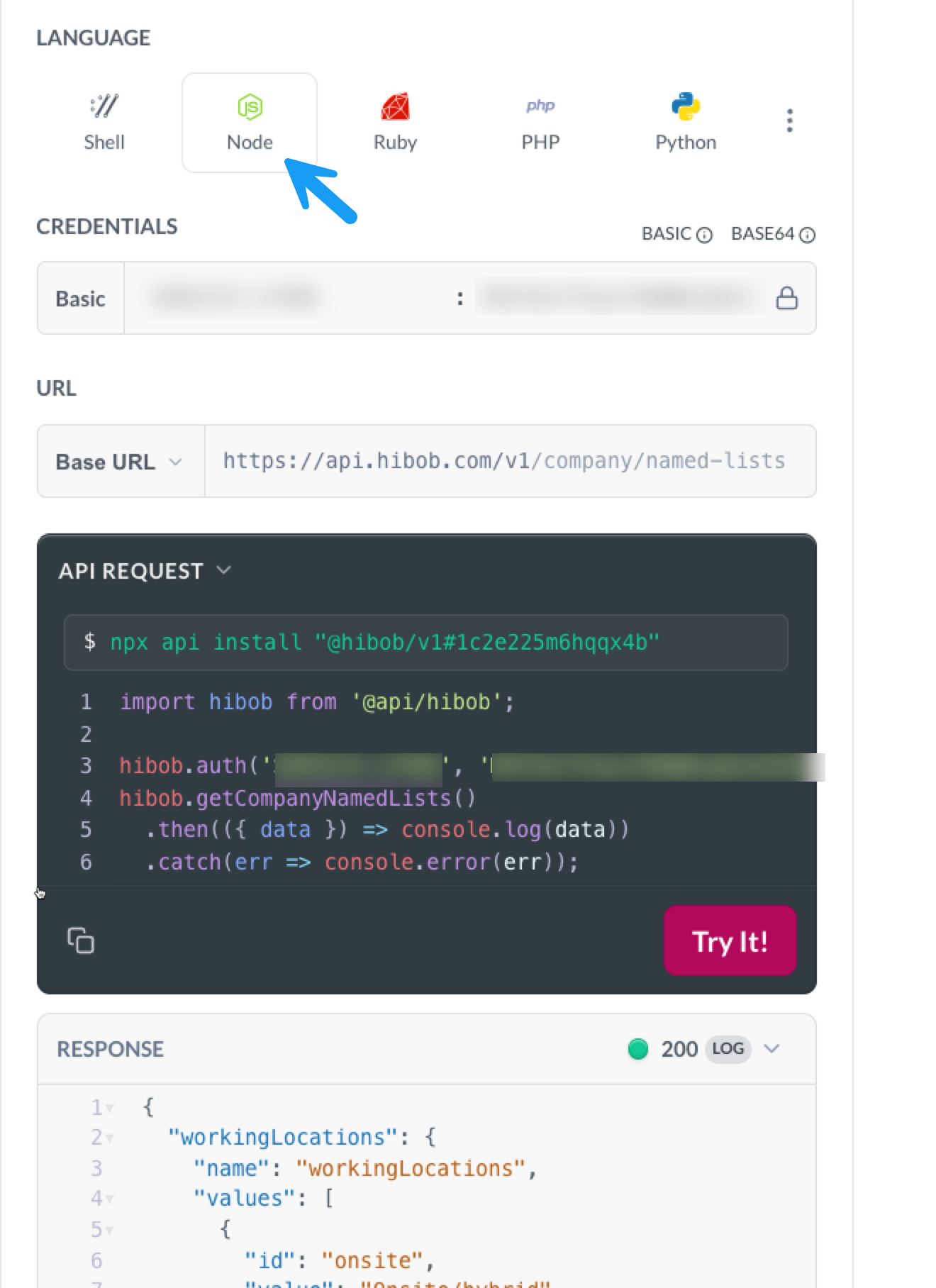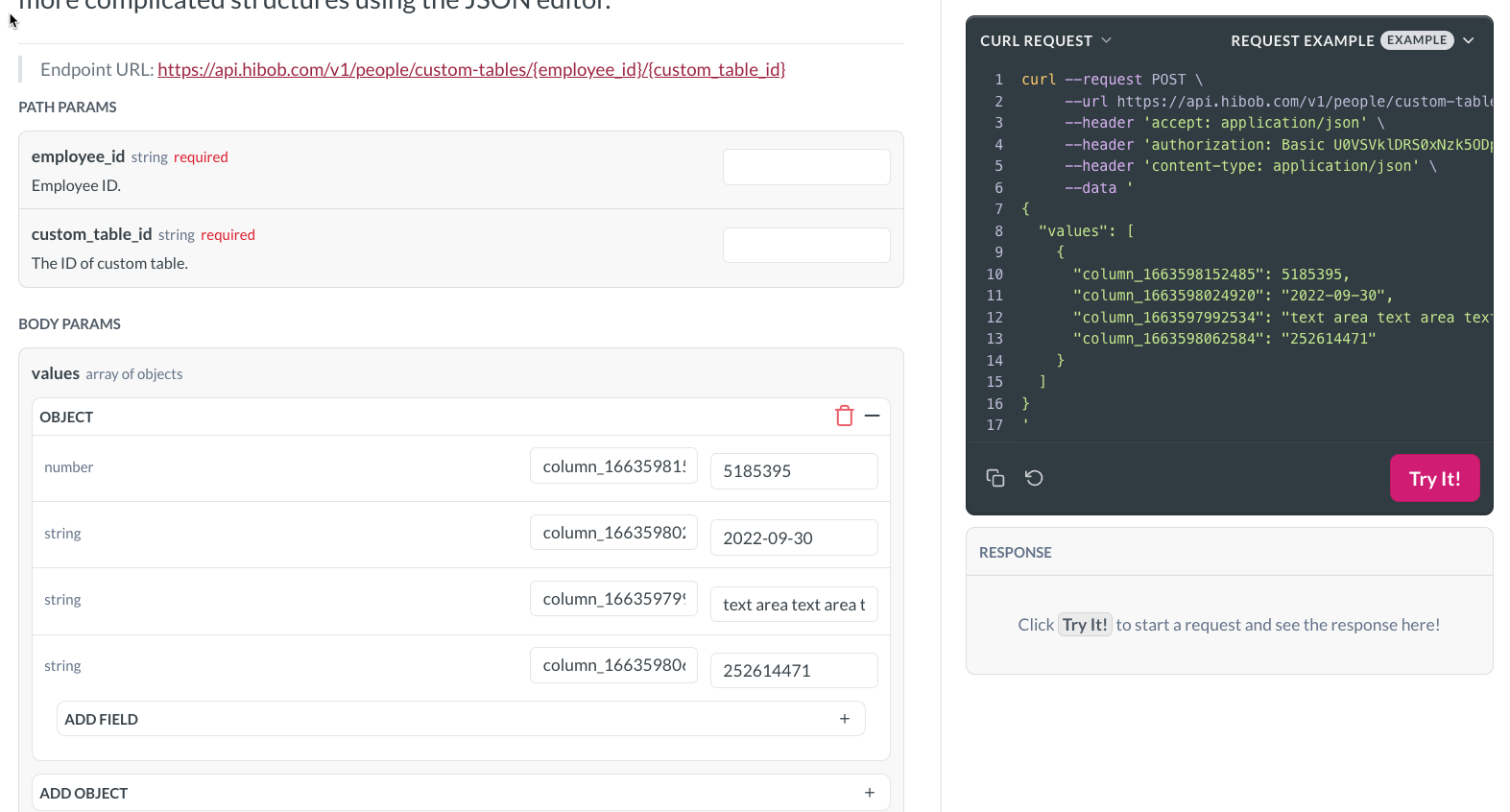We’ve enabled two AI-friendly features to support AI tools in parsing and interacting with our docs:
- llms.txt file – A dedicated file that's now available on our website. Give it to AI tools like ChatGPT or Claude and ask it questions about our API. It will help them to better understand and navigate our API docs and provide better answers.
- AI Dropdown – You’ll now see a new dropdown on every article page with options to:
- Ask ChatGPT or Claude about the article
- Copy the page as Markdown
- View it in plain Markdown
These updates are especially helpful if you use AI to summarize or extract content, or when you need to access machine-readable versions of our docs.
